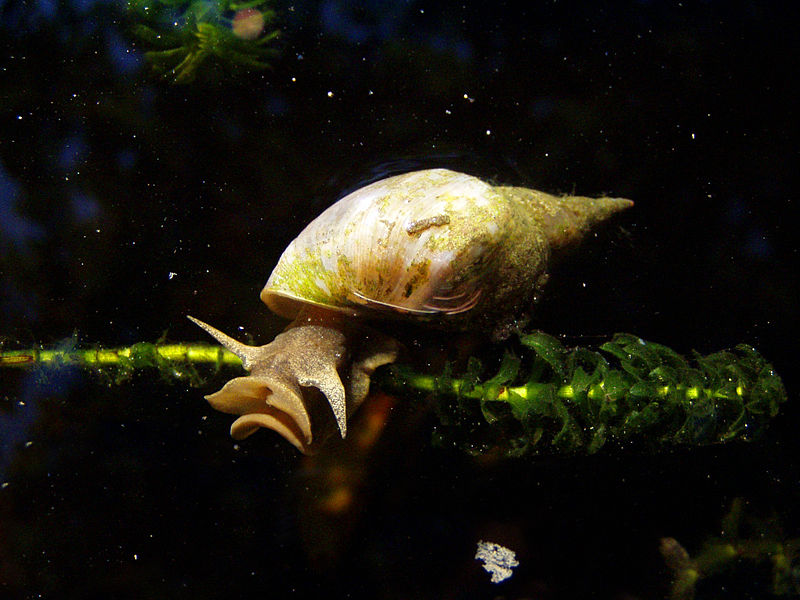More power, more colors, more sizes, more flexibility. The next generation of Panorama and Stunner LED’s from Ecoxotic simply gives you more. The new Panorama Pro units are a completely new design of the popular LED lights, and offer more power (19watts vs. 12watts), linkability, 5 color choices, and a really cool remote control RGB unit. Read More »
Category Archives: Aquarium Equipment
Feed SubscriptionDipping Plants to Eliminate Snails
 Outbreaks of nuisance snails are one of the most common problems encountered in planted aquariums. Though much maligned, snails are perfectly normal in tanks with live plants and can even help with algae control. The problems occur when the snails reproduce and become out of control. Throughout our blog posts, we’ve gone over a number of methods of controlling snails through predators and removal methods, but as with any problems, the problem can be avoided with preventative measures.
Outbreaks of nuisance snails are one of the most common problems encountered in planted aquariums. Though much maligned, snails are perfectly normal in tanks with live plants and can even help with algae control. The problems occur when the snails reproduce and become out of control. Throughout our blog posts, we’ve gone over a number of methods of controlling snails through predators and removal methods, but as with any problems, the problem can be avoided with preventative measures.
A common way of cutting down snail populations is to dip new plants, killing snails and snail eggs before they enter your aquarium. We have here a few different “recipes” for these dips. Keep in mind that while these have been used successfully by many aquarists, sensitive plants may still be damaged. You can try your chosen method on one plant before using it on all of your new plants. These are also all solutions that are to be utilized in a separate bucket, tub or sink – NOT in the aquarium! Read More »
Electrolysis and “Salt Creep” in Aquariums

Hiding Spots for Aquarium Fish – A Word of Caution
 The other day I was doing one of my daily walk-throughs and looking for a particular fish, but simply couldn’t find it. Mind you, this was not some tiny little goby or tetra that could almost literally disappear, this was a rather large, Spotted Royal Pleco, Panaque cf. nigrolineatus (L330). This particular Royal Pleco is something around 8 inches long. How in the world do you lose an 8 inch pleco? Check out the pic to the right and you’ll see. Read More »
The other day I was doing one of my daily walk-throughs and looking for a particular fish, but simply couldn’t find it. Mind you, this was not some tiny little goby or tetra that could almost literally disappear, this was a rather large, Spotted Royal Pleco, Panaque cf. nigrolineatus (L330). This particular Royal Pleco is something around 8 inches long. How in the world do you lose an 8 inch pleco? Check out the pic to the right and you’ll see. Read More »
The Importance of Water Changes In Aquarium Maintenance
Routine water changes are the most basic, most necessary, and most overlooked acts of tank maintenance. Most aquarists know they should do water changes, but not everyone does or even knows how to do it the right way. How much and how often are highly debated topics among aquarists no matter what kind of tanks they keep.
Why should we do water changes?
Removing water from the aquarium and replacing it with new, “clean” water removes waste and organics that are dissolved in the water. It also helps to remove any chemical treatments or medications when the treatment is complete. Dissolved organics contribute to Nitrate and Phosphate build-up that aquarists try so hard to control. These compounds can affect the health of your livestock directly and can promote algae and cyanobacteria growth, making your tank unsightly. Changing the water also helps to replenish minerals and other trace elements. This can be especially important in tanks with corals and crustaceans (crabs and shrimp, both freshwater and saltwater) that use these minerals to form their skeleton or exoskeleton. Corals and other saltwater invertebrates can use up minerals fairly quickly in a closed environment, and replacing old, depleted water with fresh saltwater adds these minerals back into the tank. Read More »
 That Fish Blog – Aquarium Advice and Information
That Fish Blog – Aquarium Advice and Information
